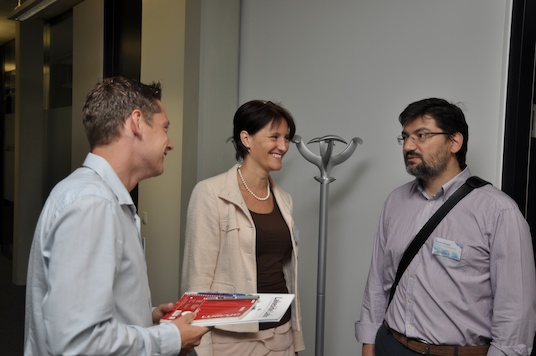The Sixth Research Days of Lakeside Labs und U Klagenfurt from July 8 — 12, 2013, hosted invited experts, professors, and young researchers to discuss ideas and exchange experiences on systems with multiple unmanned aerial vehicles (UAVs).
Autonomous UAVs are used with increasing interest in civil and commercial applications and by the scientific research community. Recently, research and development efforts have shifted toward using teams of UAVs for monitoring, surveillance, or disaster assistance, to name a few applications. However, the design principles of such a multi-UAV system still need intensive investigations. Ideally, a multi-UAV system is robust, adaptive, resource-efficient, scalable, cooperative, supportive of heterogeneity, and last but not least, self-organizing to realize its full potential. To achieve these properties, the physical control of individual robots, their sensor data analysis, navigation, and communication capabilities need to be integrated, which naturally brings together experts from many disciplines such as robotics, networking, and swarm intelligence.
The 2013 Research Days included projects and research aiming at the following key topics:
- coordination of aerial robots (e.g. movement and task execution)
- mission planning
- wireless networking (e.g. robust multimedia streaming)
- aerial imaging with person detection and 3D reconstruction
- application in real-world disaster management
Monday, July 8
Opening
Opening by Christian Bettstetter, Evsen Yanmaz, Claudia Prueggler, Friederike Wall
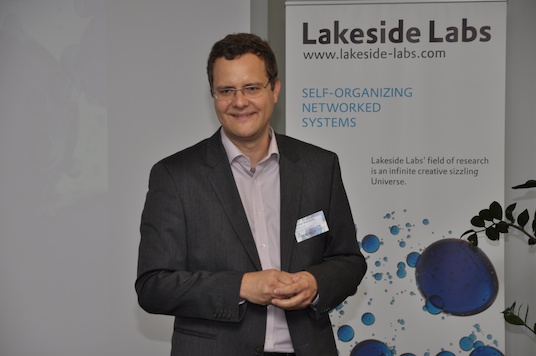
Keynote Talk #1
Small Flying Robots – Design and Visual Navigation
Roland Siegwart (ETH Zurich, Autonomous Systems Lab)
Keynote Talk #2
Fusion of Distributed Perception in Collaborative Visual-SLAM Approaches on Mini-UAVs
Darius Burschka (TU München, Machine Vision and Perception Group)
Group Work #1: System Design
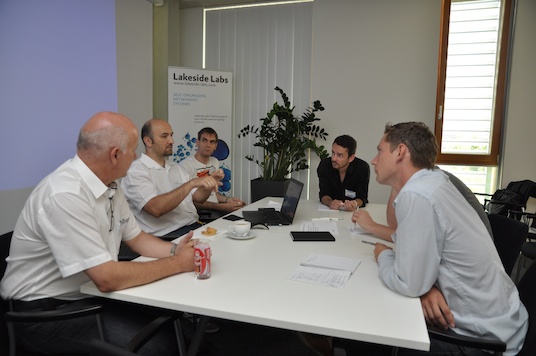
Panel: Business Opportunities
Chaired by Christian Bettstetter, Evsen Yanmaz
Panelists: Roland Siegwart (ETH Zurich), Hermann Hellwagner (AAU), Phil Charlesworth (EADS Innovation Works, UK), Michaël Rischmüller (Parrot S.A.)
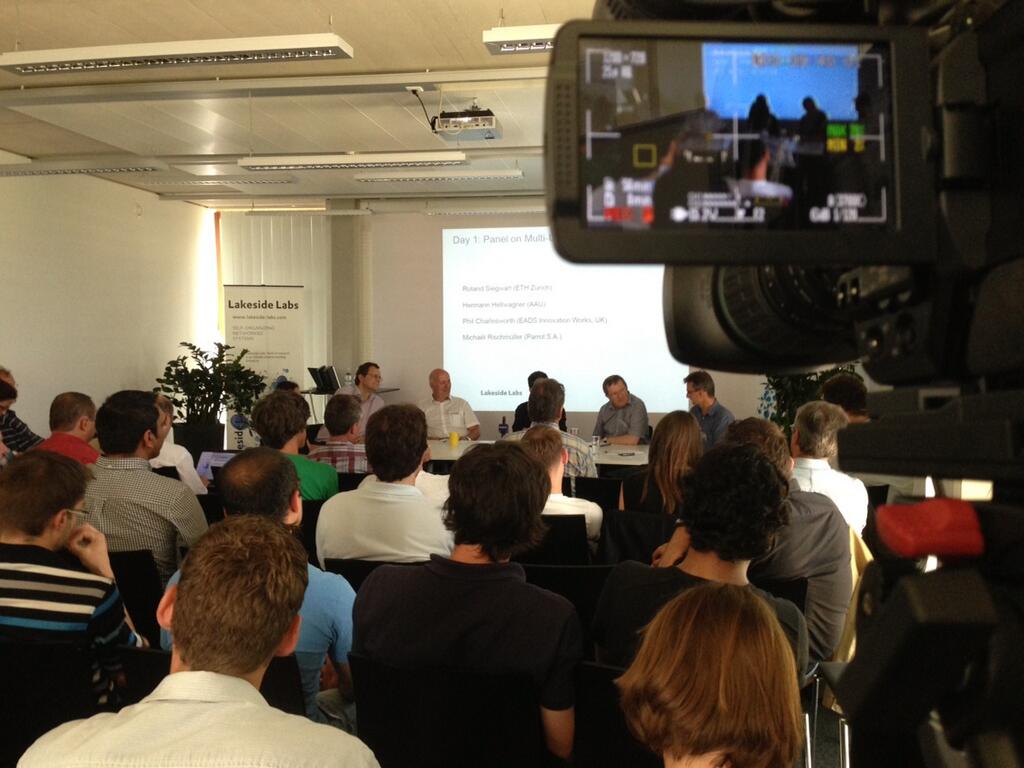
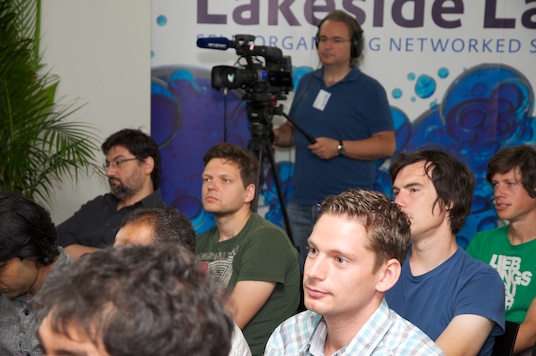
Impressions of the First Day
Tuesday, July 9
Keynote #3
Exploiting Redundancy for Reliable Aerial Computer Vision
Horst Bischof (TU Graz, Institute for Computer Graphics and Vision)

Keynote #4
Aerial Imaging and Wireless Communications with Multiple Autonomous UAVs
Christian Bettstetter, Evsen Yanmaz (AAU, Institute for Networked Embedded Systems, Lakeside Labs)
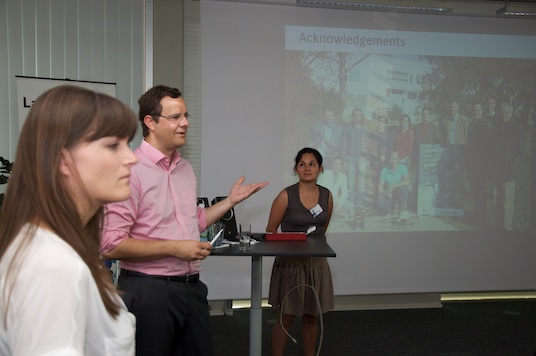
Group Work #2
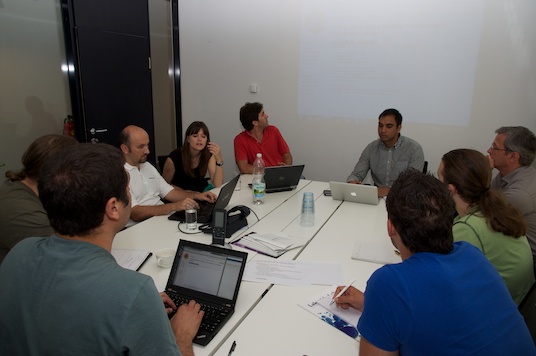
Social Event
Hike to the Wörthersee tower (Pyramidenkogel)

Wednesday, July 10
Keynote #5
Decisional Issues in Multi-UAV Systems
Simon Lacroix (LAAS/CNRS, Robotics & Interactions Group)
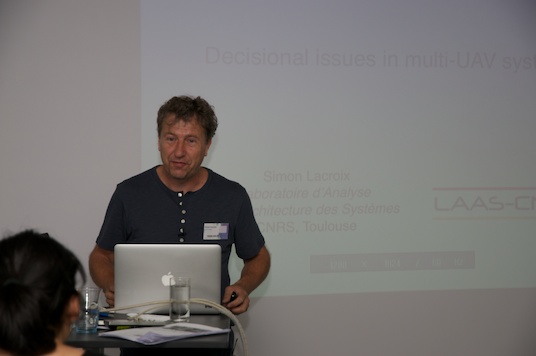
Keynote #6
Slalom racing and flight dances: Motion planning, control and learning for high-performance quadrocopter flight
Angela Schöllig (University of Toronto, Institute for Aerospace Studies)
Group work #3: Challenges in Sensing, Communication, Control
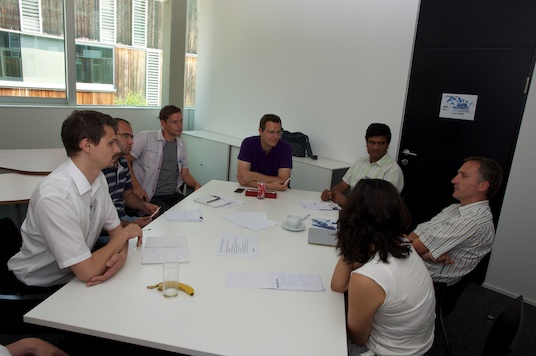
Keynote #7
Multi-Spectral People Detection from UAVs
Stephen Cameron (Oxford University, Computing Laboratory)
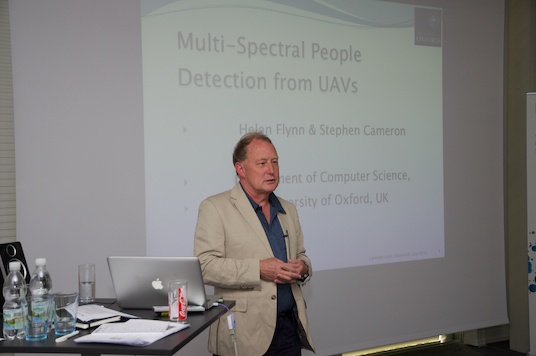
Group Work #4: Open issues, Publications, Funding
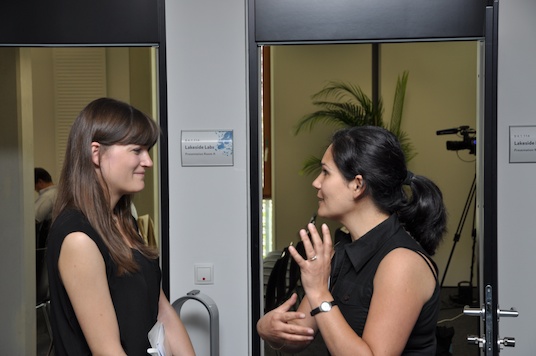
Thursday, July 13
Controlled Mobility in Wireless, Sensor, Actuator, and Robot Networks
Enrico Natalizio (Heudiasyc Lab, UTC)
Stabilization of MAV and MAV-UGV swarms based on a visual relative localization
Martin Saska (Czech Technical University in Prague)
Visual and thermal low-altitude aerial imagery for real-time monitoring
Saeed Yahyanejad (Alpen-Adria-Universität Klagenfurt)
Verification of reliability of multi-UAV for their use in any scenario
Ashutosh Natraj (University of Oxford)
On the Effects of the Robot Configuration on Evolving Coordinated Motion Behaviors
István Fehérvári, Wilfried Elmenreich (Alpen-Adria-Universität Klagenfurt)
Cooperative sensing and recognition in robot swarms
Gianni Di Caro (IDSIA)
They are ready – are they? Examining 802.11n aerial communications of search and rescue UAVs
Karin Hummel (ETH Zurich)
EchoRing: Wireless Network Design and Evaluation for Hard Real-Time Applications
Christian Dombrowski (RWTH Aachen University)
Friday, July 12
Group Work #5: Project Collaborations
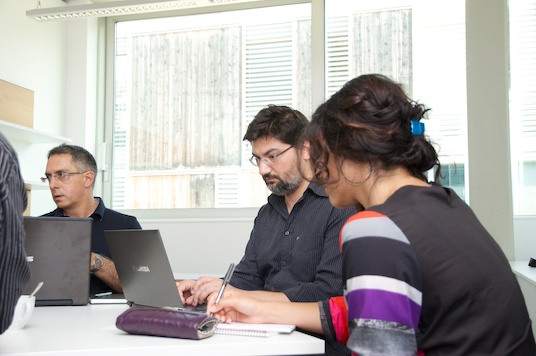
Closing Remarks
